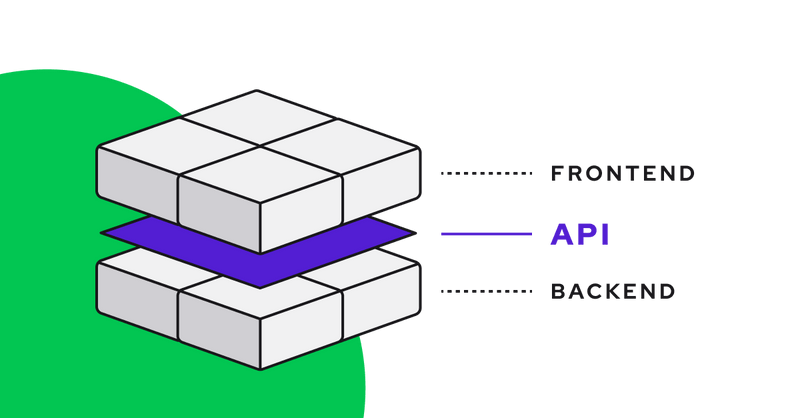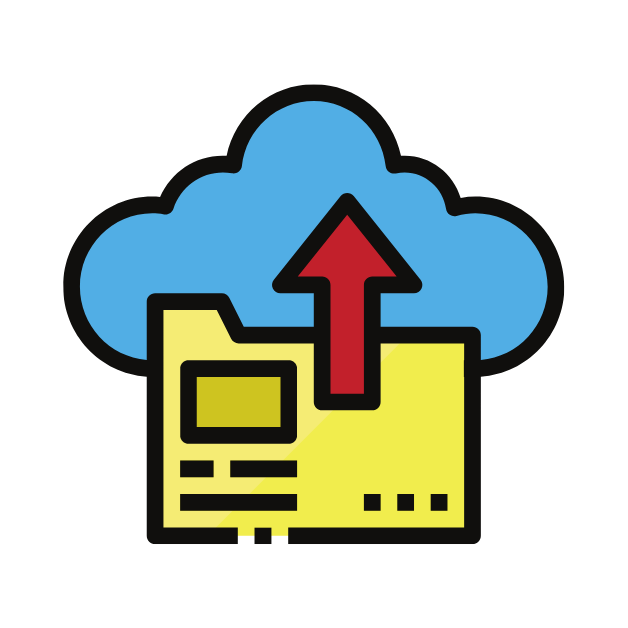A Practical Guide for Companies Navigating Declining Traffic
A drop in organic traffic can feel unsettling — especially if your team relies on steady inbound demand to drive sales. But declining traffic doesn’t...
Published: Jan 30, 2025 Updated: Feb 3, 2025
You likely already know how cloud computing can revolutionize your company. It’s critical to comprehend the various cloud computing service possibilities as you consider abandoning self-managed on-premises IT solutions. Let’s review SaaS vs. PaaS vs. IaaS and dive into what differentiates them from each other.
Here’s what you will learn in this blog:
Platform as a service (PaaS), software as a service (SaaS), and infrastructure as a service (IaaS) are the three primary cloud service models in cloud computing. Although brands typically categorize SaaS, PaaS, and IaaS in cloud computing as cloud-baed services, they all describe how your company leverages the cloud, as well as the management strategy used within the brand.
You might also encounter other kinds of cloud services that use additional technologies, such as containers, in addition to these three major groups. For instance, CaaS (containers as a service) has emerged as a result of the growing use of containers and microservices designs.

“As a service” usually refers to a cloud service paradigm that is provided by a third party, which is also the definition of cloud service models. Basic principles of cloud computing services include that you are not required to buy, maintain, or utilize any tools, apps, software, or hardware from an on-premises data center. Instead, you can use an internet connection to get what you need whenever you need it by paying for a subscription or pay-as-you-go. These models are highly useful for businesses in sectors like eCommerce, distributors, and manufacturers, offering tailored solutions for scalability and efficiency.
Professionals refer to highly scalable and automated computing resources that make up cloud infrastructure services as infrastructure as a service (IaaS). The definition of IaaS and its core concepts entails that it allows users to access and monitor computers, networking, storage, and other services entirely on their own. Instead of having to buy gear entirely, IaaS enables organizations to buy resources as needed and on demand.
IaaS uses virtualization technologies to provide cloud computing infrastructure, such as servers, networks, operating systems, and storage. IaaS clients have total control over the key characteristics and entire infrastructure thanks to these cloud servers, which are usually made available to the company via a dashboard or API.

Without requiring physical maintenance or management, Infrastructure as a Service (IaaS) offers the same advantages and features as a traditional data center. Although brands outsource this tech through a cloud-based “virtual data center,” IaaS clients can still access their servers and storage directly.
IaaS clients are in charge of managing elements including applications, runtime, operating systems, middleware, and data, in contrast to SaaS or PaaS clients. IaaS providers, on the other hand, are in charge of networking, storage, virtualization, servers, and hard drives. Additionally, some companies provide additional services like databases and message queuing that go beyond the virtualization layer.
Use case and examples of IaaS include:
Cloud platform services, sometimes referred to as platform as a service (PaaS), are primarily utilized for apps but may offer cloud components to specific software.The definition of PaaS and its core concepts is that it provides developers with a framework to build custom applications. While developers maintain control over the apps they create, servers, storage, and networking are managed by the company or a third-party provider.
PaaS and SaaS share a similar delivery model, but with a key difference: PaaS offers a platform for software development, whereas SaaS focuses on distributing software via the Internet. Since the platform is accessible online, developers can dedicate their efforts to product creation without needing to manage infrastructure, storage, operating systems, or software updates.

Key characteristics of PaaS allow businesses to integrate unique software components into the platform to design and develop applications. These programs—commonly referred to as middleware—leverage cloud features to ensure they are highly available and scalable, supporting business growth and adaptability.
Use cases and Examples of PaaS include:
The most popular choice for companies in the cloud market is software as a service (SaaS), sometimes referred to as cloud application services. The definition of SaaS is that it uses the internet to provide its users with apps that are run by a third-party provider. Most SaaS programs don’t require client-side downloads or installations because they operate directly in your web browser.
SaaS removes the need for IT personnel to download and install apps on every computer because of its web-delivery architecture. A key characteristic of SaaS is that it allows providers to handle all possible technological problems, including those involving data, middleware, servers, and storage, which simplifies maintenance and support for business clients.
By significantly cutting down on the time and money spent on time-consuming operations like installing, administering, and upgrading software, SaaS offers both employees and businesses several benefits. This gives the technical staff more time to work on organizational business-critical issues.

SaaS’s primary advantage is that it transfers all application and infrastructure management to the SaaS provider. To begin using the program, the user only needs to register, pay the price, and get started. The vendor takes care of everything else, including patching and upgrading the server, controlling user access and security, collecting and organizing data, and maintaining the server’s hardware and software.
Use cases and examples of SaaS include:
In the cloud computing ecosystem, the pros and cons of IaaS, SaaS, and PaaS play vital roles in meeting different business needs. But what sets them apart? To better understand the differences, think of these services in a logical hierarchy:
IaaS provides the foundational infrastructure needed to develop cloud-based services, such as software or online stores. It allows businesses to access virtual machines, storage, and networks to build their own infrastructure.

PaaS, in contrast, offers a platform that simplifies app development by removing the need to manage underlying hardware or hosting. Developers can focus solely on creating and deploying applications without worrying about the technicalities of infrastructure management.
While PaaS provides the platform for hosting and developing applications, SaaS delivers fully developed software directly to end-users. With SaaS, the provider manages all aspects of the product, including servers, data, and applications, enabling users to focus entirely on utilizing the tool for their specific tasks.
Pros and Cons Analysis:
The choice among these services depends on your company’s specific needs, weighing the advantages and limitations of each model to determine the best fit for your goals.
Every solution has characteristics that are tailored to various tasks, therefore there is no correct or incorrect choice. Additionally, each adds a new layer to your information system (IS). Everything is dependent on how big your initiatives are. Details on IaaS, PaaS, and SaaS cloud services are provided below:
For particular business needs, particularly a business that needs assessment, you might only require specific software or applications if you already have an on-premises infrastructure. Additionally, you could not feel the need for an infrastructure (SMEs, freelancers) or even have one. The best option for you in this situation is a SaaS solution. You only pay for your user license with it, leaving hosting and hardware upkeep to professionals.
As-is infrastructure organizations can easily obtain extra resources that satisfy their demands by providing services. The end user doesn’t need a local infrastructure to develop their projects with this service. Cloud models that are public, private, or hybrid can incorporate IaaS solutions. In a data center, a cloud service provider houses actual hardware.
PaaS is perfect for the technical requirements of developers who value efficiency and cost-effectiveness when producing original applications. In addition, PaaS allows developers to concentrate on the creative parts of app development, including creating, testing, and deploying, by relieving them of tasks like software upgrades and security patches. PaaS can let you focus more on innovation, cut down on maintenance time, and expedite development.
Here are the implementation strategies, migration considerations, hybrid approaches, and best practices for each cloud computing service:
With the cloud, IaaS gives enterprises more flexibility and scalability than on-premise systems. IaaS companies usually offer pay-per-use services including virtualization, networking, and storage. Whether via a dashboard or an API, IaaS cloud servers are usually made available to companies online, giving them total control over their computer infrastructure.
With the primary distinction being that clients can only access an online platform rather than online software, PaaS distribution is similar to SaaS approaches. PaaS gives programmers the platform they need to create, freeing them from worrying about outside problems so they can focus on the software itself.
SaaS is made available online as a fully functional service that may be accessed with any web browser. Additionally, SaaS streamlines business processes by letting providers handle data, servers, and storage, thus doing away with the need for IT oversight.
With public cloud computing, you can assign one, multiple, or all of your infrastructure’s components to a third party’s management. IaaS, PaaS, and SaaS are three primary categories of cloud computing alternatives, and each one offers a certain level of management for you. Let’s explain IaaS, SaaS, and PaaS in detail now for a pros and cons analysis:
IaaS
One of the key benefits of IaaS is the ability to quickly and flexibly set up and take down development and testing environments. With IaaS, you can use only the infrastructure you need, for as long as you need it, making it an efficient and cost-effective solution for development teams. However, there are some challenges to consider, such as potential security issues from the provider, multi-tenant systems where infrastructure resources are shared among clients, and concerns about service reliability.
PaaS
PaaS is particularly beneficial for developers and programmers, allowing them to create, deploy, and manage applications without the need to build and maintain the underlying platform or infrastructure. By leveraging pre-built software components, developers can significantly reduce the amount of code they need to write, streamlining the application development process and improving efficiency.

SaaS
SaaS is an ideal solution for applications that require minimal customization, are used intermittently, or are suited for small businesses lacking the resources to manage software installation and updates. While SaaS can save time and reduce maintenance burdens, it may come at the cost of reduced control, security, and performance. Choosing a trusted and reliable provider is essential to maximize the benefits of SaaS while minimizing its potential drawbacks.
Here are some of the most common FAQs about cloud computing models:
What is “As-a-Service”?
“As-a-service” refers to a cloud computing model where a third-party provider delivers a service—such as infrastructure, platforms, or software—over the internet. This allows you to focus on what matters most, such as your code and customer interactions, without worrying about managing the underlying technology.
What are IaaS, SaaS, and PaaS?
IaaS (Infrastructure as a Service), PaaS (Platform as a Service), and SaaS (Software as a Service) are the three main categories of cloud service offerings. These are also known as cloud computing service models. These models are not mutually exclusive, and many organizations—both large and small—leverage a combination of these services to meet their needs.
Can IaaS, SaaS, and PaaS Be Used Together?
Yes, most businesses use more than one of these models, often integrating them with traditional IT systems. Larger organizations commonly utilize all three—SaaS for software, PaaS for application development, and IaaS for virtual infrastructure—working in tandem to create a comprehensive and scalable cloud solution.
What Is the Main Difference Between IaaS, SaaS, and PaaS?

You can obtain resources and technology at a reduced cost by outsourcing your SaaS, PaaS, or IaaS services. Additionally, when you compare IaaS, PaaS, and SaaS to investing in an on-premises infrastructure, these cloud solutions can be deployed and fully operational much faster.
At Pimberly, we offer all of the above-mentioned PaaS, SaaS, and IaaS cloud models through an open, sovereign cloud, ensuring you maintain complete control over your data. For the best cloud computing services, contact us at Pimberly today.


